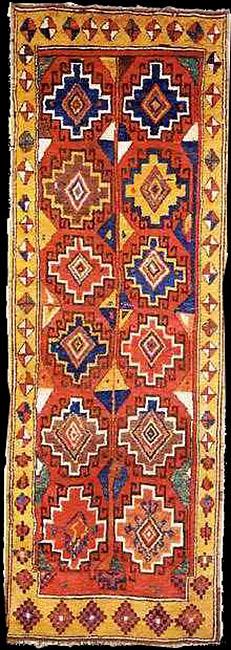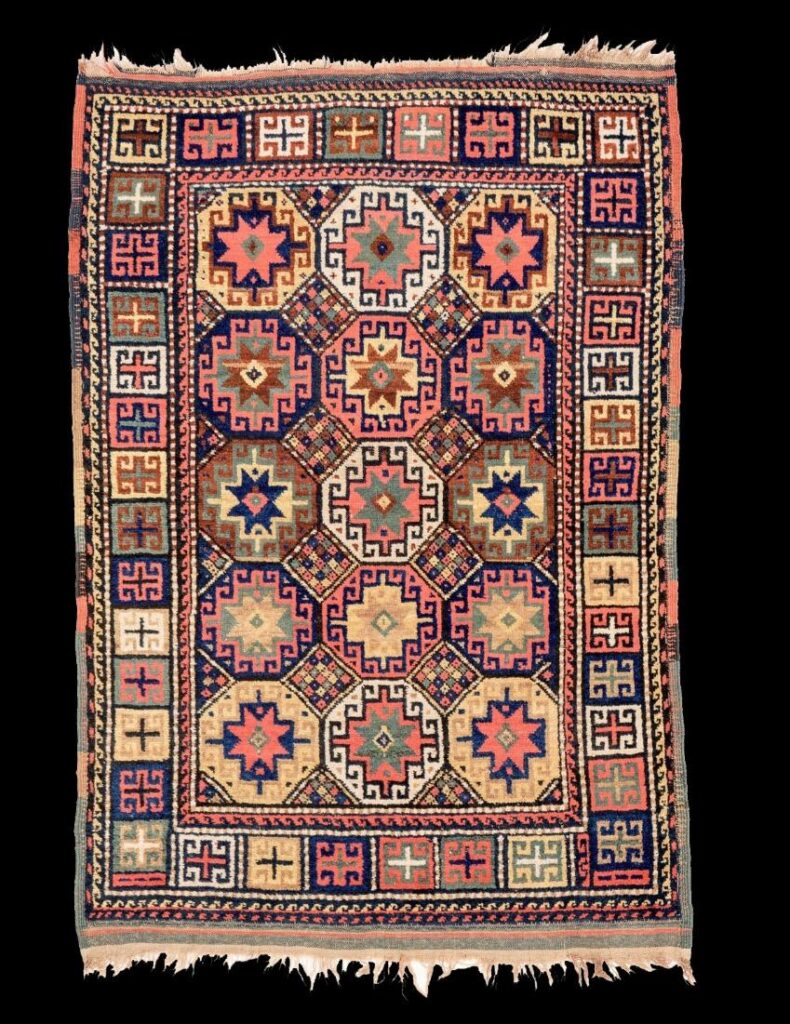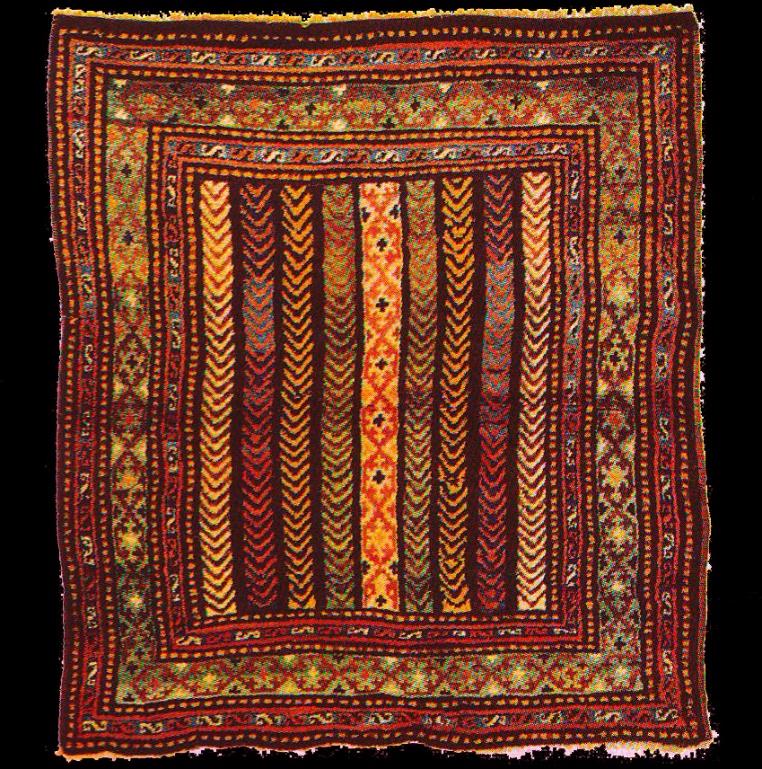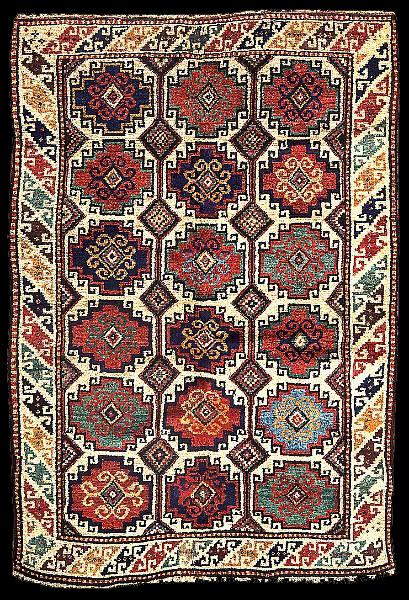Zakatala Rugs
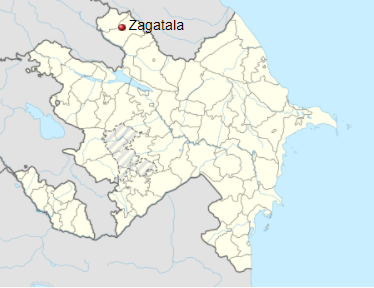
Zaqatala (also Romanized as Zakatala and Zagatala) is a city in northwestern Azerbaijan and the administrative center of the Zaqatala District. It is located on the Tala River. The city is populated by Avars, Turks, Lezgins, Tsakhurs and Ingiloys.
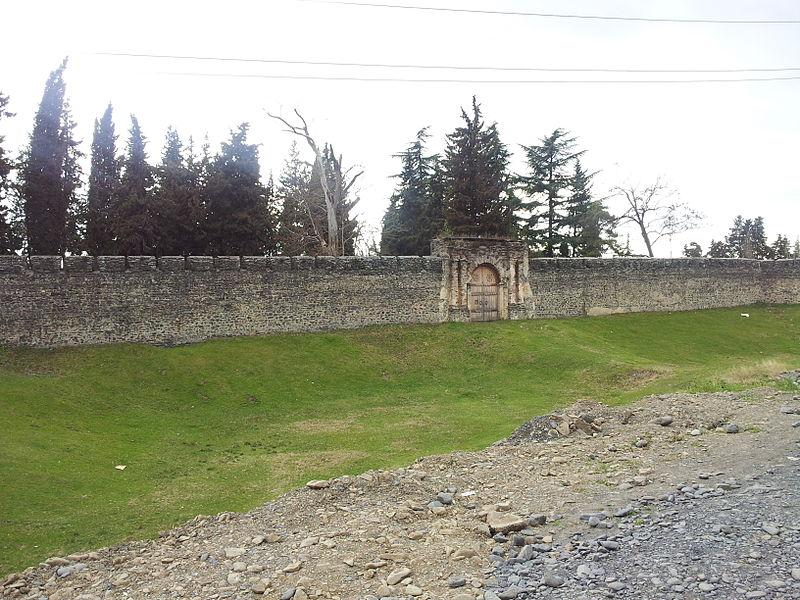
The Avars are a Northeast Caucasian native ethnic group which forms the largest of several ethnic groups living in the Russian republic of Dagestan and northern Azarbaijan Republic. The Avars reside in a region known as the North Caucasus between the Black and Caspian Seas. The Avar language spoken by the Caucasian Avars belongs to the family of Northeast Caucasian languages and is also known as Nakh–Dagestanian.
Antique rugs of Zakatala are categorized as Kazaks. This is a general term for some Caucasian rugs. The reputation of Kazak pieces backs to the 19th century when rug production of the area boomed under the Tsarist Russia.
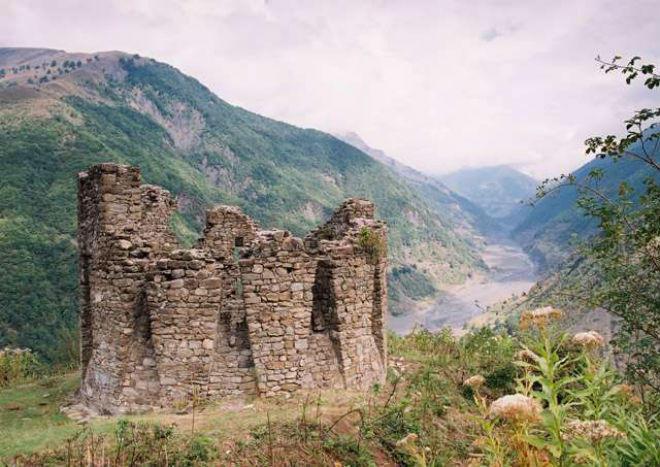
Technical aspects and the structure of Zakatala Rugs
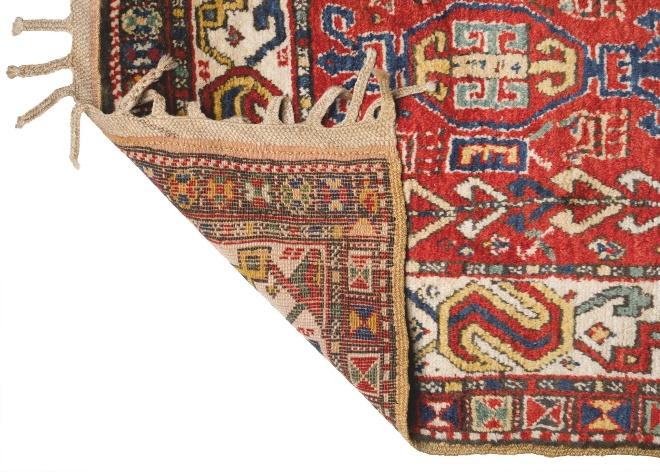
Antique Zakatala have symmetric knots. Warps, wefts and piles are woolen in antique pieces. Area rug sizes are favored including long ones. Runners, too, could be found. Prayer sizes are common including rare sizes and formats like square.
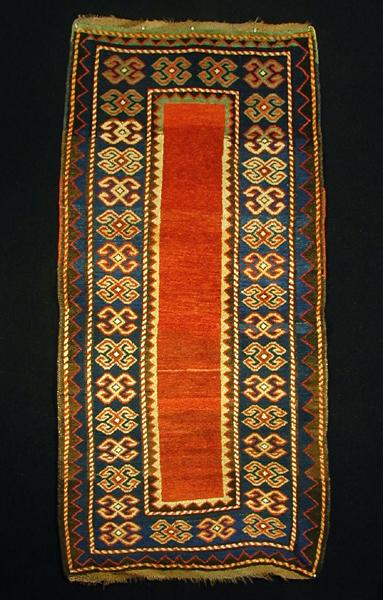
Dyeing and painting of Zakatala rugs
Zakatala palette consists typically of bright colors to moderate the bold geometric motifs. Red, blue, ivory and camel used for fields, while the secondary palette include a vast range of light and dark shades, from to apricot to natural black wool. Ivory, too, is undyed wool. Brick red of the region is famous. Deep pinks and golden camel are common.

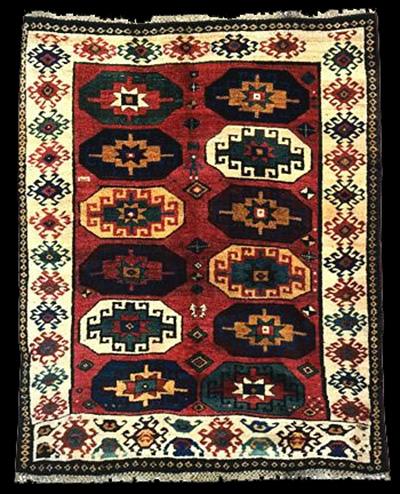
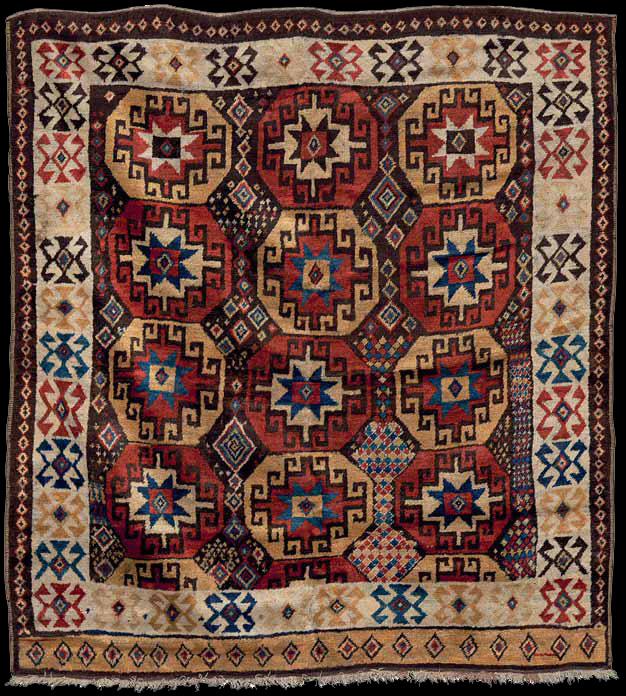
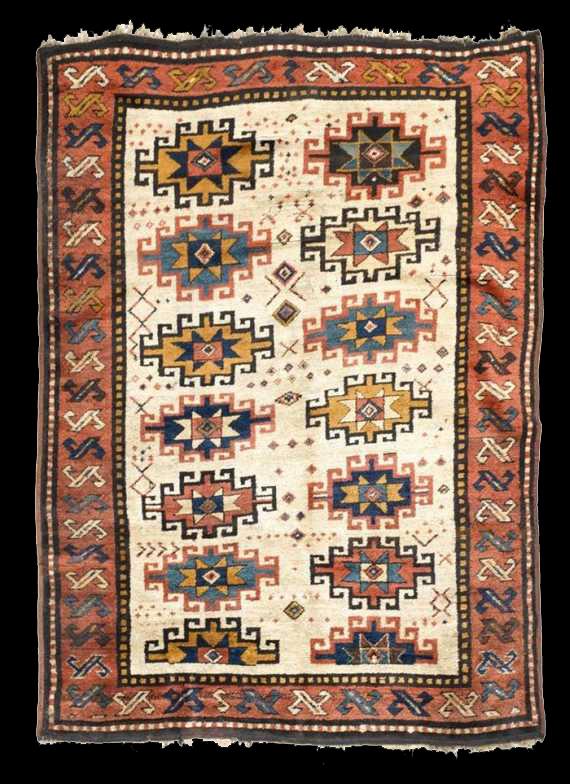
Designs and patterns of the Zakatala rugs
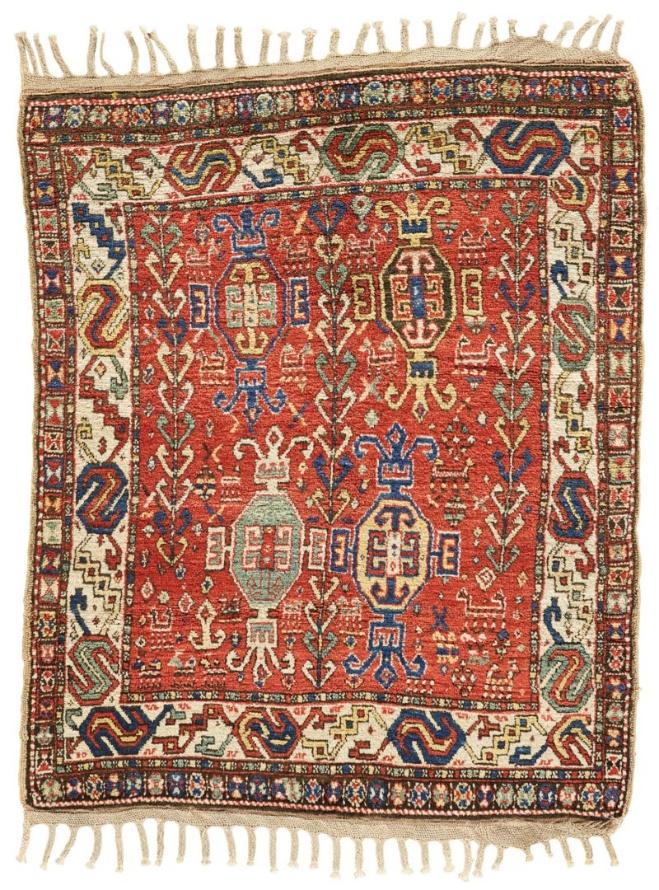
Zakatala rugs chiefly designed with the famous Memling guls. It is a common carpet motif named after the European artist Hans Memling (1430 –1494). Rugs depicted in Memling’s paintings mostly designed with this motif. The motif characterized by hooked lines radiating from a central denticulate body, usually framed by a linear octagon. Memling designs have been surmised to be from Anatolia or Armenia. The simple geometric form suggest an old age for the motif, used all over the orient first probably in flat-woven pieces, and then in the piled rugs.
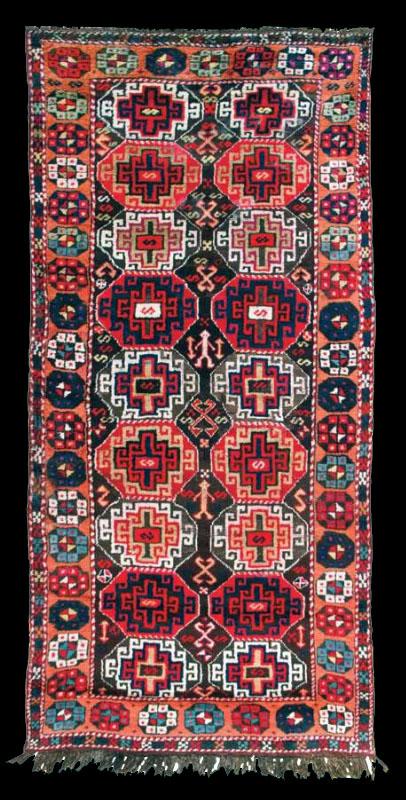
Another type of design used in Zakatala made of repeats of dented lozenges. Such motifs may be called Baklava which is an oriental pastry cut in lozenges. Vertical strips make another Zakatala design.
